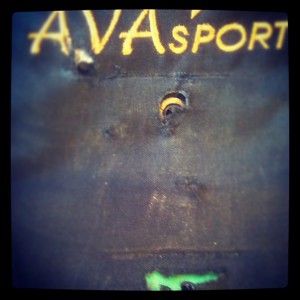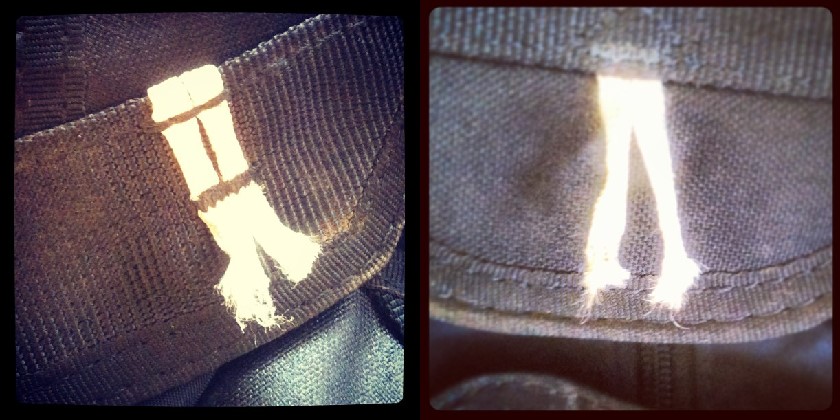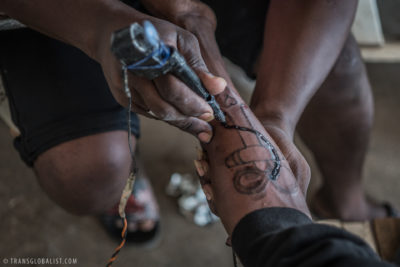“Success breeds complacency. Complacency breeds failure. Only the paranoid survive.”
—Andrew Grove
When it comes to adventure activities, routine is a double-edged sword. A well-rehearsed, thorough, and targeted routine can keep you safe–helping make sure that things don’t fall through the cracks, escaping your attention. A poorly thought-through routine, on the other hand, can provide a false sense of security–making one think that the critical “i”s are dotted and “t”s crossed when quite the opposite is true. And any routine can lead to complacency–the arch-enemy of safety.
Complacency, my friends, is seriously Bad Juju.
Today I walked away from a lesson in complacency that could easily have ended in serious injury or death. Instead of merely feeling stupid (which I do) and missing out on a day of fun (which I did), I could be sitting, broken or worse, in a local hospital, or in a treetop 500 meters up the back side of Sarangkot ridge hoping someone noticed my plight or would notice my absence in time to help me.
So, what did you do that was so flippin’ terrible?
Short version: Every single flight since I’ve arrived in Pokhara was flown with an improperly secured reserve parachute, due to insufficiently thorough gear checks. Complacent gear checks. Lazy. And I got away with it due to blind, stupid luck. Nothing more.
Ummm…sounds like you’re exaggerating. Should we call a Whaaaambulance? How precarious was the situation, really?
Very. My rescue is secured with two closing loops. Because I was going to practice acrobatic (“acro”) maneuvers today, I decided to visually inspect these loops. This should be SOP, and I know this full well, but I had gotten complacent. Instead of the proper checks, I had fallen into the much simpler routine of verifying that the reserve handle was properly fastened. This check is unacceptable and dangerously insufficient. The handle has two closing pins attached, one seated firmly in each closing loop. When I attempted to verify that pin #1 was able to move freely in loop #1 (in other words, if I needed to pull the handle in an emergency, I could, in fact, pull it free and save my life) the loop broke instantly. With the lightest of tugs. The pressure released was enough to also break the second loop, and the reserve fell onto the ground.
Pardon my French, but this is very fucking bad.
Any pressure (say, unintentionally kickng the bottom of the harness lightly during a partial collapse in turbulence–a common occurrence) could have resulted in an accidental reserve deployment a thousand meters above unforgiving terrain, with no one around to witness the event and attempt to send aid. Unlike skydiving reserves, basic paragliding rescue parachutes are round, and can’t be steered. They come down hard.
Well, ok then. It was bad. But why was it so easy to break these “closing loops?” That can’t be your fault, right?
Unfortunately, the answer is “yes,” it can be my fault. Culpable. Idiotic. Lazy and…complacent. Don’t believe me? Take a look at this picture:
What you see is the protective flap covering the closing loops and pins. The two larger holes are friction burns, caused by, ummm, unimpressive landings at last October’s Ölüdeniz Air Games wherein I slid across the concrete on my ass, protected by my harness; specifically by this flap. Hence the friction burns. You can see that these burns go all the way through the flap (you can actually see a grommet peeking out of the center hole). If you can see that, in a crappy smartphone pic, you might wonder why the actual pilot flying the actual harness and viewing it in actual real life with his actual eyes didn’t take the actual time to open the actual flap and make actually sure that he wasn’t trusting his actual life to a flying death trap.
(It’s a good question, but it has no good answer. Apparently, the actual pilot–me–couldn’t be bothered. I wish there were a more satisfying, understandable answer, but there you have it.)
After the loops popped, a closer examination revealed that the friction burns had actually melted the synthetic fabric of the closing loops to the metal of the closing pins. My gentle attempt to move the pin tore the molten fabric free, breaking both loops and releasing the rescue parachute in the process. My bad landings caused the weakened condition, and my bad habits let it go undetected. For how long? Who knows.
Embarrassing. Dangerous. Completely preventable.
And there you have it, friends. Mea culpa. Let this post be my penance for epic idiocy; public self-flagellation as Public Service Announcement. It really isn’t that hard: develop thorough, targeted habits, practice them religiously, and never ever ever short-circuit them for the sake of convenience or laziness.
Love and Gear Checks,
—The Luckiest Guy in Pokhara







